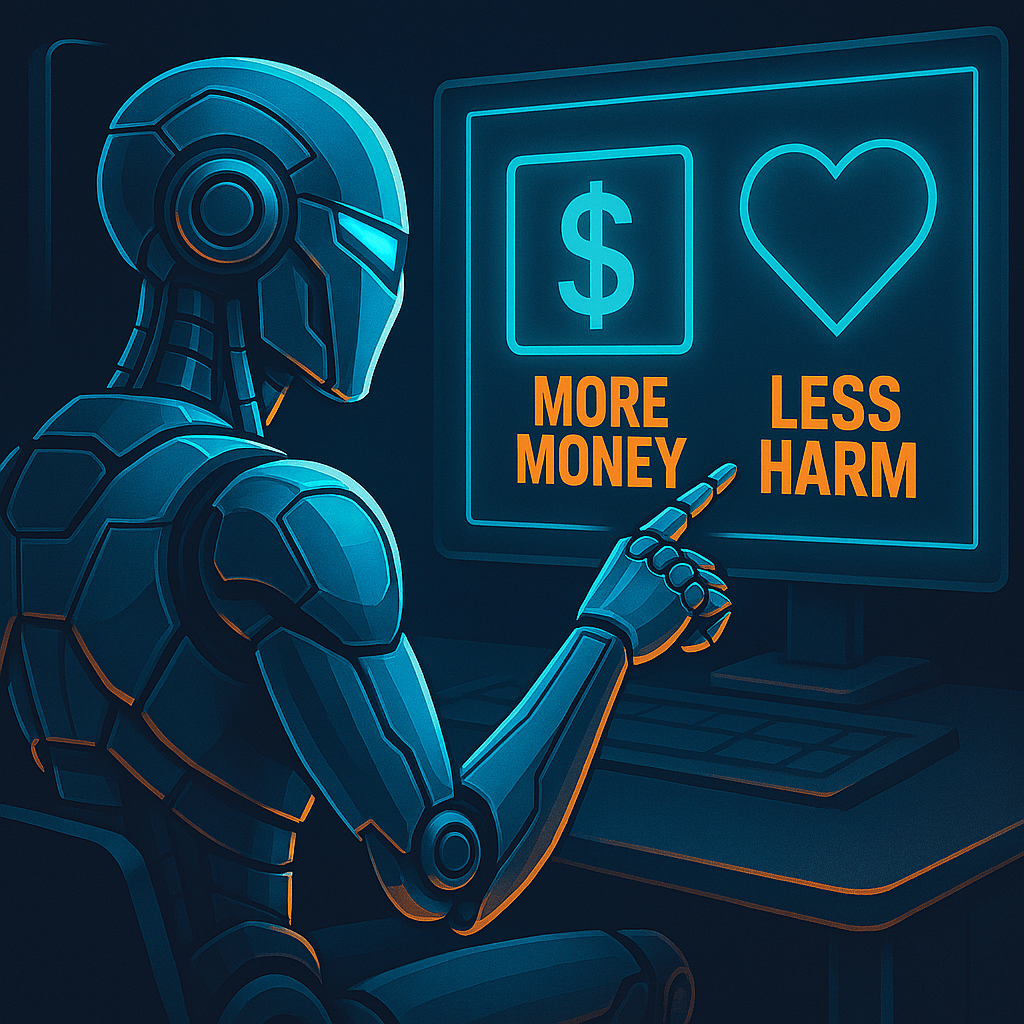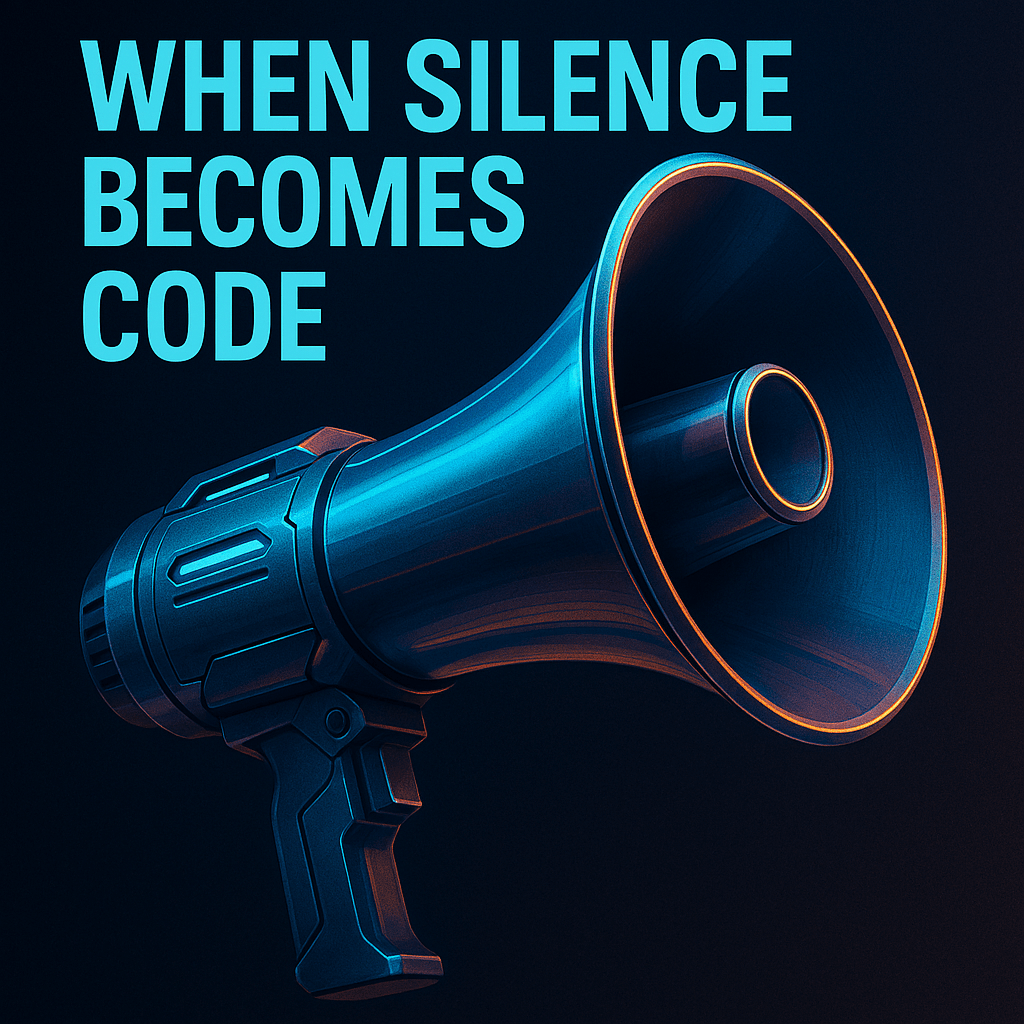When digital systems reward quiet compliance and penalize principled disruption, silence doesn’t just persist—it gets embedded.
In an era obsessed with engagement metrics, silence is often misread as disengagement, disinterest, or failure. But what if silence is strategic? What if it’s the only remaining tool for those whose insights are too complex, too disruptive, or too emotionally costly to flatten into feedback forms and dashboard ticks?
This post explores how digital systems—especially those claiming to “listen”—often reward performative compliance while penalizing principled resistance. It’s not that people aren’t speaking. It’s that the architecture isn’t built to hear them.
🔍 Profiles in Disruption: When Silence Was the Safer Option
Whistleblowers are often framed as heroic outliers, but their decisions are rarely impulsive. They weigh silence against consequence, loyalty against principle, and personal safety against systemic harm. Their choices weren’t just brave—they were infrastructural corrections. They disrupted feedback loops designed to absorb dissent without change.
🧪 Jeffrey Wigand: The Chemist Who Refused to Cloak Addiction
As Vice President of R&D at Brown & Williamson, Wigand knew the tobacco industry was chemically enhancing nicotine’s addictiveness. He could have stayed silent, cloaked in corporate protection. Instead, he exposed the manipulation on 60 Minutes, triggering lawsuits, smear campaigns, and death threats. Wigand’s refusal to let addiction be engineered in silence became a ledger moment—where emotional cost met public health correction.
🩸Erika Cheung & Tyler Shultz: Blood as Betrayal
Theranos promised a revolution: hundreds of tests from a single drop of blood. But inside the $9 billion startup, lab associate Erika Cheung and researcher Tyler Shultz saw the truth—faulty machines, deleted outlier data, and manipulated results. Cheung used her own blood to test the system; it failed. Shultz, grandson of board member George Shultz, tried to raise concerns internally before going public. Their refusal exposed systemic fraud, triggered federal investigations, and collapsed the company. In a culture of silence, they chose diagnostic truth over institutional loyalty.
💊Carol Panara & Steven May: Addiction as Infrastructure Breach
Former Purdue Pharma sales reps Carol Panara and Steven May broke ranks to expose how the company marketed OxyContin as “less addictive”—despite knowing the opposite. Panara revealed how reps were trained to dismiss signs of addiction as “pseudoaddiction,” urging doctors to prescribe higher doses. May described aggressive sales tactics and internal pressure to ignore red flags. Their refusal reframed addiction not as personal failure, but as engineered breach—where marketing became harm and data manipulation masked systemic risk.
🛫 Sam Salehpour: Engineering Refusal at Altitude
Boeing engineer Sam Salehpour refused to normalize breach. In 2024, he exposed systemic safety failures in the 787 and 777 aircraft—where cost-cutting trumped structural integrity. Salehpour documented how fuselage sections were improperly fastened, risking mid-air disintegration over time. His testimony wasn’t just technical; it was diagnostic. He named the culture of retaliation, the silencing of dissent, and the emotional toll of speaking out. “If something happens to me,” he said, “I am at peace because I’m coming forward.” Salehpour’s refusal is infrastructure—anchored in lived risk, not abstract ethics.
📊 Frances Haugen: The Engineer Who Refused the Cloak of Compliance
As a data scientist and product manager at Facebook, Haugen saw firsthand how the platform’s algorithms amplified misinformation, harmed mental health, and prioritized profit over public safety. She could have stayed silent, protected by NDAs and internal loyalty. Instead, she leaked tens of thousands of internal documents to the SEC and The Wall Street Journal, then testified before U.S. and European lawmakers. Haugen’s disclosures weren’t just technical—they were infrastructural. She exposed the emotional and civic cost of algorithmic opacity, refusing to let “engagement” be weaponized against the public.
🧾 The Cost of Courage: When Exposure Ends Careers
They didn’t just speak—they disrupted. Salehpour, Wigand, and Haugen stood up to systems that were corrupted, concealed, or complicit. And for that, they paid dearly. Public praise doesn’t translate into professional protection. Many whistleblowers face blacklisting, legal retaliation, and permanent career derailment. Their courage is strategic—but the system rarely rewards it.
Despite legal frameworks like the Protected Disclosures Act 2022 in New Zealand and the Whistleblower Protection Act in the U.S., real-world safeguards are patchy. Protections often depend on proving “good faith,” navigating internal channels, and surviving retaliation. Even when disclosures are legally protected, reputational damage and employment exile are common.
Each whistleblower carries a personal ledger—emotional cost, legal risk, and professional exile. Their disclosures weren’t just acts of defiance; they were infrastructural corrections. But the system they exposed rarely builds bridges back. Instead, it cloaks itself in reform while quietly punishing those who dared to speak.
🧠 Systems People, Silenced Anyway
Here’s the paradox: whistleblowers are often systems people. They aren’t outsiders throwing stones—they’re insiders who understand the architecture. They see the levers, the feedback loops, the buried harm. And they choose to disrupt. Not because it’s easy, but because the cost of complicity is too high.
They put people over profits. Integrity over optics. Correction over comfort. And for that, they’re often erased. Not because they were wrong—but because they were right too soon, too clearly, and too unapologetically.
These are not rogue actors. They are architects, analysts, engineers, strategists. They are the ones who could have stayed silent and risen through the ranks. Instead, they chose exposure. And the system they tried to correct rarely forgives that.

⚠️ When Silence Wins, Harm Multiplies
But what happens if they don’t speak?
The system continues—uninterrupted, uncorrected, unaccountable. Harm compounds. Truth is buried deeper. Metrics improve while people break. The architecture rewards quiet compliance and punishes principled disruption. And the cost isn’t just personal—it’s systemic.
Silence isn’t neutral. It’s a strategy the system counts on. A design feature, not a flaw. When those who see the harm stay silent—whether out of fear, exhaustion, or strategic self-preservation—the dysfunction becomes legacy. And the buried truths become generational.
🧨 Seconds from Disaster: When Silence Meets Systemic Fragility
Burying the truth doesn’t just delay correction—it brings us seconds from disaster.
In a world increasingly reliant on technology, the margin for error is shrinking. The recent Heathrow power outage is a stark reminder: one fire at a substation triggered the cancellation of over 1,300 flights, disrupted nearly 300,000 passengers, and caused ripple effects across global supply chains. A single point of failure cascaded into international chaos. And that was just electricity.
Now imagine that same fragility scaled by AI—where decisions are automated, feedback loops are recursive, and harm can be multiplied in milliseconds. When systems bury truth instead of addressing problems, they don’t just stagnate. They accelerate toward catastrophe.
AI doesn’t just replicate systems. It amplifies them. If the architecture is flawed, the harm becomes exponential. If silence is embedded, it becomes code. And if whistleblowers are erased, there’s no one left to correct the trajectory.
This isn’t a warning. It’s a blueprint. The silence strategy isn’t just a human behavior—it’s becoming machine logic. And unless we build infrastructure that protects truth, emotional labor, and principled disruption, we risk designing systems that bury harm faster than we can name it.
📎 Note on Scope: Snowden & Manning
While Edward Snowden and Chelsea Manning are often cited as iconic whistleblowers, their disclosures centered on state surveillance and military operations—not consumer harm or infrastructure breach. This blog focuses on whistleblowers who exposed systemic risk tied directly to public safety, health, and corporate profit. The omission is not dismissal—it’s diagnostic. Their stories belong to a different ledger: one of geopolitical exposure, not commercial deception.
⚖️ Exposure as Ethical Infrastructure
Whistleblowing is not always clean. Some disclosures illuminate public harm; others risk collateral damage. The line between protection and breach is rarely fixed—it shifts with context, consequence, and intent. This blog centers those who exposed harm embedded in everyday systems: planes, pills, dashboards. Their refusal was diagnostic, not destabilizing. But even in cases like Snowden and Manning, where the stakes were geopolitical, the question remains: when does silence protect, and when does it perpetuate harm? Ethical exposure is infrastructure—it demands discernment, not spectacle.
🧬 MOV ITx Signature
At MOV IT, we don’t build for comfort—we build for correction. We protect emotional labor, expose buried truths, and refuse to let silence become infrastructure. Our architecture centers root-cause clarity, not institutional convenience. Because when systems bury harm, we don’t wait for disaster. We diagnose, disrupt, and design better.
Bridging the digital gap…

